
Multiscale and Multidisciplinary Modeling Experiments and Design
Scope & Guideline
Exploring the frontiers of modeling across multiple scales.
Introduction
Aims and Scopes
- Multiscale Modeling:
The journal emphasizes the development and application of multiscale modeling techniques that bridge different physical scales, from the atomic level to macroscopic behaviors, crucial for understanding material properties and behaviors. - Multidisciplinary Approaches:
It encourages interdisciplinary research that combines insights from various fields such as mechanical engineering, civil engineering, materials science, and computational intelligence to solve complex engineering challenges. - Computational Intelligence:
A significant focus is on utilizing advanced computational intelligence techniques, including machine learning and artificial intelligence, for predictive modeling and optimization in engineering applications. - Experimental Validation:
The journal underscores the importance of experimental validation of computational models, ensuring that theoretical predictions are substantiated by empirical data. - Innovative Materials and Design:
It explores innovative materials and design methodologies, particularly those that enhance performance and sustainability in construction and manufacturing processes.
Trending and Emerging
- Machine Learning and AI Applications:
There is a growing trend of applying machine learning and artificial intelligence techniques to various engineering problems, particularly in predictive modeling and optimization of material properties and performance. - Sustainability and Green Materials:
Research on sustainable materials and environmentally friendly construction practices is gaining traction, reflecting a broader societal push towards sustainability in engineering. - Advanced Composite Materials:
The exploration of advanced composite materials, including hybrid and nanocomposite systems, is increasingly popular, driven by the demand for lightweight and high-strength materials in various applications. - Computational Fluid Dynamics (CFD):
CFD is emerging as a critical tool in modeling complex fluid interactions, heat transfer, and material behaviors under various conditions, showcasing the journal's focus on advanced simulation techniques. - Smart and Adaptive Systems:
There is an increasing interest in smart and adaptive engineering systems that incorporate feedback mechanisms and real-time data analysis, enhancing the adaptability and efficiency of engineering solutions.
Declining or Waning
- Traditional Material Analysis:
There has been a noticeable decrease in traditional material analysis techniques that do not incorporate modern computational approaches, as researchers increasingly prefer integrated methods that combine experimental and computational insights. - Basic Statistical Methods:
Basic statistical methods are becoming less prevalent, with a shift towards more sophisticated data-driven techniques that leverage machine learning and AI for predictive analytics. - Conventional Design Approaches:
Conventional design methodologies that do not incorporate multidisciplinary or multiscale perspectives are waning, as the field moves toward more holistic and integrated design solutions. - Single-Disciplinary Studies:
Research focused solely within a single discipline has declined, with an increasing emphasis on multidisciplinary collaboration to address complex engineering challenges.
Similar Journals
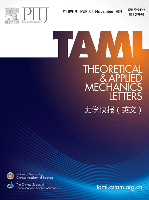
Theoretical and Applied Mechanics Letters
Exploring Cutting-Edge Solutions in Engineering DisciplinesTheoretical and Applied Mechanics Letters, published by ELSEVIER, stands as a premier journal in the field of engineering and applied mechanics, recognized for its rigorous peer-reviewed articles that advance theoretical and practical frameworks. With an impressive open access policy established in 2015, the journal enhances global accessibility to cutting-edge research across a range of disciplines including Aerospace, Civil, Mechanical, and Biomedical Engineering, along with Computational Mechanics and Ocean Engineering. The journal boasts an enviable position in the academic landscape, achieving a Q1 rank in several categories as of 2023, while being cited among the top percentiles in Scopus Ranks, specifically ranking #25 in Aerospace Engineering and #15 in Computational Mechanics. The journal aims to foster innovation by providing a platform for scholars and professionals to disseminate their findings, thereby bridging the gap between theoretical research and practical applications. By promoting a diverse range of topics and methodologies, Theoretical and Applied Mechanics Letters not only contributes to the advancement of engineering disciplines but also supports the global academic community in exploring sustainable and impactful engineering solutions.

COMPUTATIONAL MECHANICS
Elevating Research Standards in Computational MechanicsCOMPUTATIONAL MECHANICS, published by SPRINGER, is a premier international journal that focuses on the intersection of applied mathematics, engineering, and computational methods. With a commendable Q1 ranking in multiple categories, including Applied Mathematics and Mechanical Engineering, this journal is pivotal for disseminating groundbreaking research and innovative methodologies that advance the field. The journal has steadily contributed to the academic community since its inception in 1986 and continues to lead discussions and practices in computational mechanics and related disciplines. With a robust impact reflected in its Scopus rankings—placing it within the top percentiles across various categories—COMPUTATIONAL MECHANICS serves as a crucial platform for researchers, professionals, and students seeking to explore and contribute to significant advancements in computational theory and mathematical applications. Although it does not currently operate under an open access model, the journal ensures wide accessibility through libraries and institutional subscriptions, fostering a rich exchange of knowledge in the global scientific community.
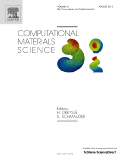
COMPUTATIONAL MATERIALS SCIENCE
Pioneering Research at the Intersection of Science and EngineeringCOMPUTATIONAL MATERIALS SCIENCE is a prestigious academic journal dedicated to the dissemination of innovative research in the field of computational materials science, emphasizing the interplay between computational methodologies and materials engineering. Published by ELSEVIER in the Netherlands, this journal showcases high-impact articles that contribute significantly to the understanding of material properties through computational techniques. As evidenced by its 2023 Scopus Rankings, which place it in the top quartiles across multiple disciplines including Computer Science, Materials Science, and Physics and Astronomy, it is a vital resource for researchers, professionals, and students alike. With a focus on advancing scientific knowledge and practical applications, COMPUTATIONAL MATERIALS SCIENCE aims to bridge the gap between theoretical investigations and experimental validation. Explore a wealth of cutting-edge research designed to inspire the next generation of innovations in materials science through this esteemed publication.
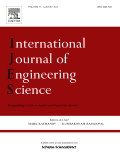
INTERNATIONAL JOURNAL OF ENGINEERING SCIENCE
Elevating Engineering Discourse with Impactful InsightsInternational Journal of Engineering Science, published by Pergamon-Elsevier Science Ltd in the United Kingdom, stands as a premier platform for pioneering research in the diverse fields of engineering and materials science. Since its inception in 1963, this journal has consistently demonstrated its commitment to advancing academic discourse, maintaining an impressive trajectory that positions it in the Q1 category across multiple engineering disciplines including Mechanical Engineering and Mechanics of Materials as of 2023. With notable Scopus rankings—placing it in the top 5% percentile for Mechanical Engineering and related fields—this journal attracts high-quality, impactful research designed for both industry practitioners and academic scholars. Although it does not currently offer Open Access options, its readership is enriched by comprehensive peer-reviewed articles, fostering a deeper understanding of complex engineering problems and innovative solutions. The International Journal of Engineering Science continues to be an invaluable resource for researchers, professionals, and students committed to pushing the boundaries of knowledge in engineering and materials science.

Periodica Polytechnica-Civil Engineering
Connecting Academia and Industry in Civil EngineeringPeriodica Polytechnica-Civil Engineering is a prestigious journal published by the Budapest University of Technology and Economics, dedicated to advancing the field of civil engineering through high-quality research and innovative practices. Established in 1972, the journal has transitioned through various phases of publication and now spans an expansive range of topics within civil and structural engineering, geotechnical engineering, and engineering geology. With an impact factor indicating its growing influence and a commendable placement in the Q3 quartile according to the latest 2023 metrics, it recognizes contributions that bridge theoretical advancements with practical applications. While currently not open access, the journal remains a vital resource for researchers, professionals, and students seeking to stay abreast of the latest developments in engineering design, construction techniques, and geotechnical innovations. The continuous publication of significant research after almost five decades underscores its commitment to disseminating knowledge crucial for the world’s infrastructure challenges, making it an essential reference point within the engineering community.
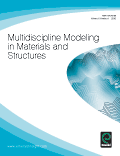
Multidiscipline Modeling in Materials and Structures
Innovating the future of materials science and engineering.Multidiscipline Modeling in Materials and Structures, published by EMERALD GROUP PUBLISHING LTD, serves as a vital platform at the intersection of diverse fields including materials science, mechanical engineering, and modeling and simulation. Since its inception in 2005, this journal has gained recognition for its commitment to advancing knowledge and innovation within these disciplines, boasting a commendable Q3 categorization across multiple fields as of 2023. With a robust Scopus ranking that places it in the top 60th percentile for both mechanical engineering and mechanics of materials, it stands as a credible source for researchers and practitioners seeking to stay informed on the latest methodologies and applications. The journal emphasizes the importance of collaborative approaches to complex problems in materials and structural analysis, aiming to foster interdisciplinary dialogue and generate impactful research outcomes. Although currently not open access, the journal offers subscription options that ensure access to cutting-edge studies and critical reviews relevant to professionals and students alike. Engaging with this journal not only enriches one’s understanding of the field but also contributes to the ongoing discourse and development of innovative solutions in materials and structural modeling.

JOURNAL OF ELASTICITY
Bridging Theory and Application in Mechanical EngineeringJOURNAL OF ELASTICITY is a prestigious peer-reviewed journal dedicated to the study and advancement of the field of elasticity and its numerous applications across various disciplines. Published by SPRINGER, and located in the Netherlands, this journal has been a key resource since its inception in 1971, providing critical insights and developments up through 2024. With a commendable impact factor and categorized within the Q2 quartile in areas such as Materials Science, Mechanical Engineering, and Mechanics of Materials, the journal maintains a significant standing in the academic community. Researchers and professionals will find a wealth of knowledge through advanced theoretical and experimental studies published within its pages, contributing to both foundational understanding and practical applications. While currently not an open access publication, the JOURNAL OF ELASTICITY remains an essential platform for innovative research and discussions that shape the future of mechanical sciences.
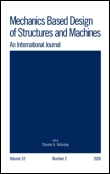
MECHANICS BASED DESIGN OF STRUCTURES AND MACHINES
Transforming Concepts into Engineering RealitiesMECHANICS BASED DESIGN OF STRUCTURES AND MACHINES is a premier academic journal published by Taylor & Francis Inc, dedicated to advancing knowledge in the fields of mechanical engineering, aerospace engineering, and more. With an impressive Q1 ranking in multiple engineering and physics categories for 2023, the journal is recognized for its high impact and critical contributions to research, as evidenced by its Scopus rankings that position it in the top percentiles across various disciplines. The journal focuses on innovative methodologies and applications pertaining to mechanics-based design, making it an essential resource for researchers, professionals, and students looking to enhance their understanding and application of design principles in structures and machines. As an open access publication, it ensures widespread dissemination of knowledge and facilitates collaboration across the global research community. For those interested in the latest developments and scholarly discussions, MECHANICS BASED DESIGN OF STRUCTURES AND MACHINES offers a vital platform that nurtures interdisciplinary dialogue and practical applications.

Materials Research Letters
Accelerating Discoveries in the World of MaterialsMaterials Research Letters, published by Taylor & Francis Inc., serves as a leading platform in the field of materials science, offering an open access format to enhance global research dissemination since 2013. With an impressive impact factor and ranking in the Q1 category for miscellaneous materials science, this journal ranks #57 out of 463 in the Scopus materials science categories, placing it within the 87th percentile among its peers. The journal aims to provide rapid publication of short communications that report on significant findings in all areas of materials research, thus fostering innovation and collaboration among scholars, professionals, and students alike. As a primary conduit for cutting-edge research and developments in materials science, Materials Research Letters is essential for those seeking to stay at the forefront of this dynamic field.

npj Computational Materials
Advancing the Future of Materials Science.npj Computational Materials is a premier open-access journal published by the esteemed NATURE PORTFOLIO since its inception in 2015, dedicated to advancing the interdisciplinary fields of computational materials science and engineering. With an impressively robust impact, the journal has achieved Q1 rankings across multiple disciplines, including Computer Science Applications, Materials Science, and Mechanics of Materials, making it a leading platform for disseminating innovative research. Researchers and professionals benefit from its high visibility and accessibility, given the open-access format that allows for a global reach. The journal continues to foster the development of computational methods and simulations that drive forward the design and deployment of advanced materials, positioning itself as an essential resource for academics and practitioners alike. By bridging the gap between theoretical models and practical applications, npj Computational Materials plays a crucial role in shaping the future of materials research.